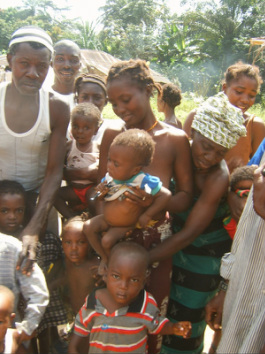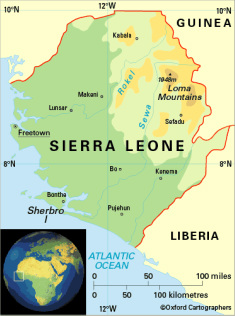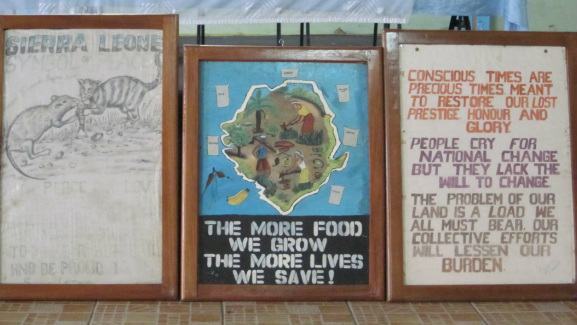Why Sierra Leone as a Focus - History and Achievements

The United Nations Human Development Index (HDI), which rates a variety of factors including access to clean water, infant mortality rate, and availability of food, consistently ranks Sierra Leone near the bottom. This is in no small part due to the underlying causes of poverty: poor education, poor nutrition, poor health care, poor support, and poor self-esteem. In 2007, Sierra Leone was also named as the worst place in Sub-Saharan Africa to be a woman, and as having the highest infant mortality rate in the world. People in Sierra Leone’s urban slum areas and rural communities are especially vulnerable, as they do not have access to even the most basic of resources needed to improve their lives.
The Sierra Leone Truth and Reconciliation Commissions (TRC) envisioned a “National Vision for Sierra Leone” of peace and progress and created recommendations to address the problems that helped cause the conflict with the hopes of turning that vision into reality. The difficulty lies in finding ways to inspire people in such a way that they feel they can succeed in bringing about positive TRC and SDG results and address the current devastating conditions by providing the needed social, educational, economic and health changes. The challenge is to gather, organize and inspire members of the community around activities of common interest, particularly the development of children in the areas of education, physical and mental health and social service protection. The approach includes:
1) strengthening the LemonAid Fund’s network of schools and organizations so as to build social capital among the community, helping them to work together to effectively obtain and sustain shared objectives for themselves;
2) the introduction of preventative health, technology, literacy materials, art, science, math, values, conservation, play, life skills, psychosocial and healthy and peaceful means of living into the lives of people to expand their vision of the future; and
3) mobilizing the LemonAid Fund’s network of villages to work together to address larger political and economic issues. It is important that the change comes from within the community, starts early, and builds on each persons existing strengths to develop a critical mass for sustainable change. The activities must help the people to see that both individually and collectively their efforts can bring tangible results.
The Sierra Leone Truth and Reconciliation Commissions (TRC) envisioned a “National Vision for Sierra Leone” of peace and progress and created recommendations to address the problems that helped cause the conflict with the hopes of turning that vision into reality. The difficulty lies in finding ways to inspire people in such a way that they feel they can succeed in bringing about positive TRC and SDG results and address the current devastating conditions by providing the needed social, educational, economic and health changes. The challenge is to gather, organize and inspire members of the community around activities of common interest, particularly the development of children in the areas of education, physical and mental health and social service protection. The approach includes:
1) strengthening the LemonAid Fund’s network of schools and organizations so as to build social capital among the community, helping them to work together to effectively obtain and sustain shared objectives for themselves;
2) the introduction of preventative health, technology, literacy materials, art, science, math, values, conservation, play, life skills, psychosocial and healthy and peaceful means of living into the lives of people to expand their vision of the future; and
3) mobilizing the LemonAid Fund’s network of villages to work together to address larger political and economic issues. It is important that the change comes from within the community, starts early, and builds on each persons existing strengths to develop a critical mass for sustainable change. The activities must help the people to see that both individually and collectively their efforts can bring tangible results.



